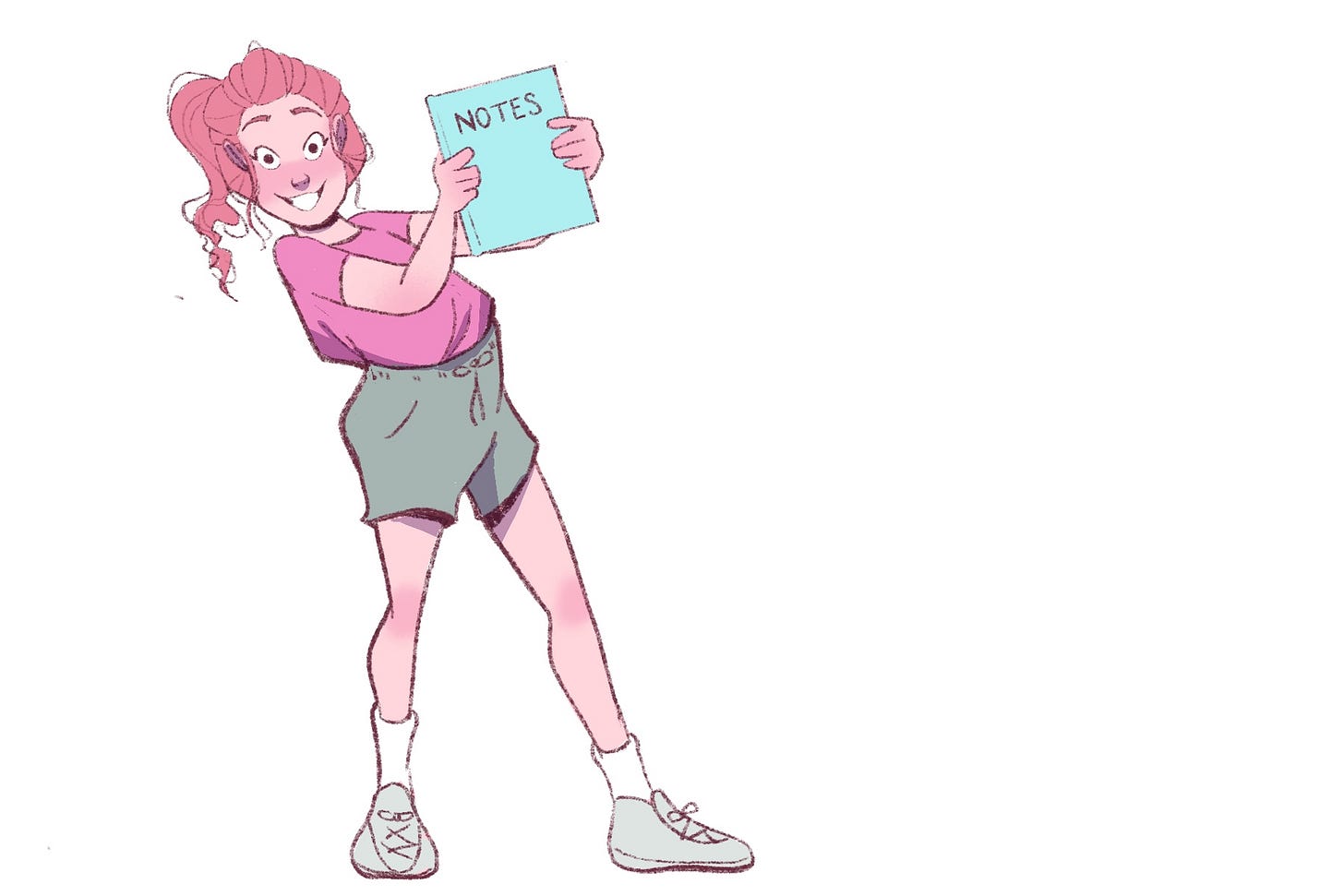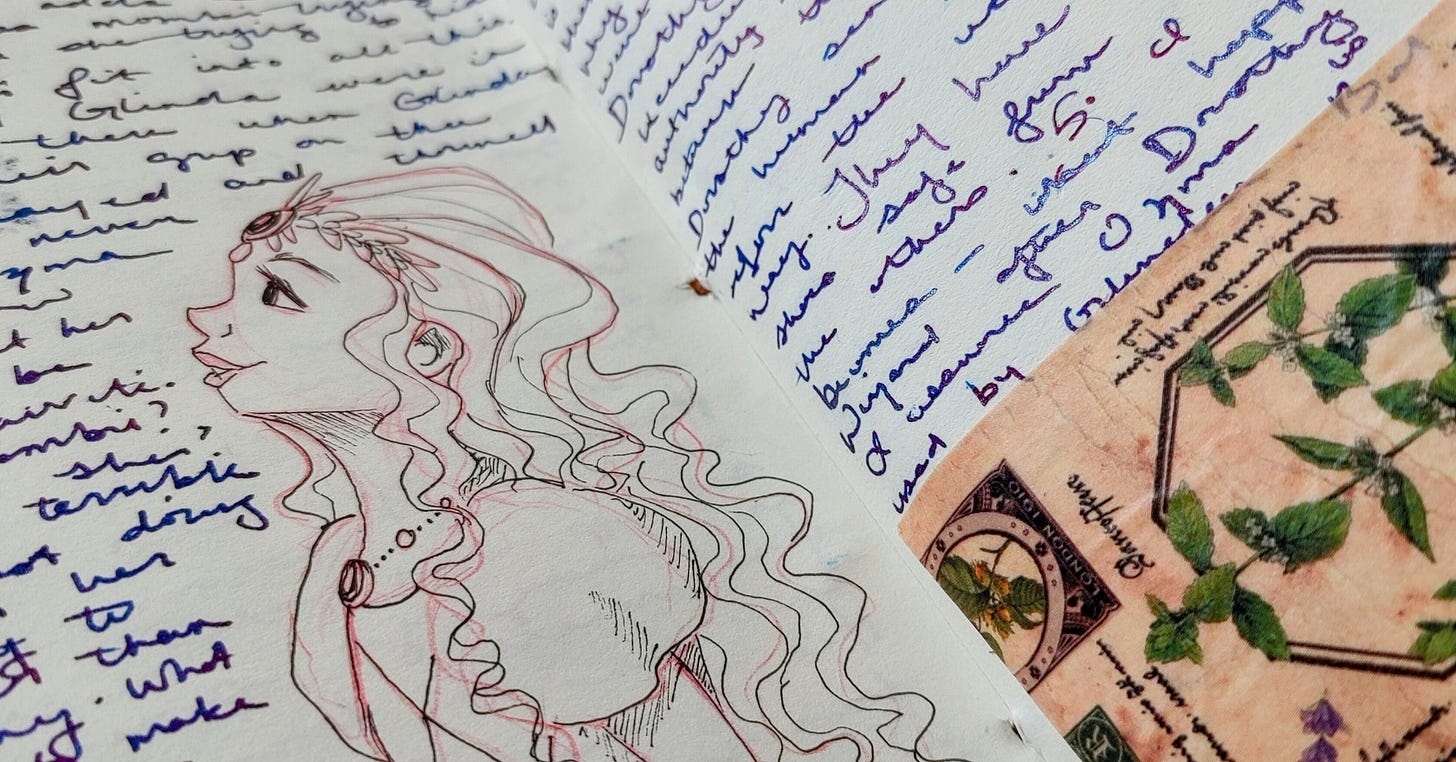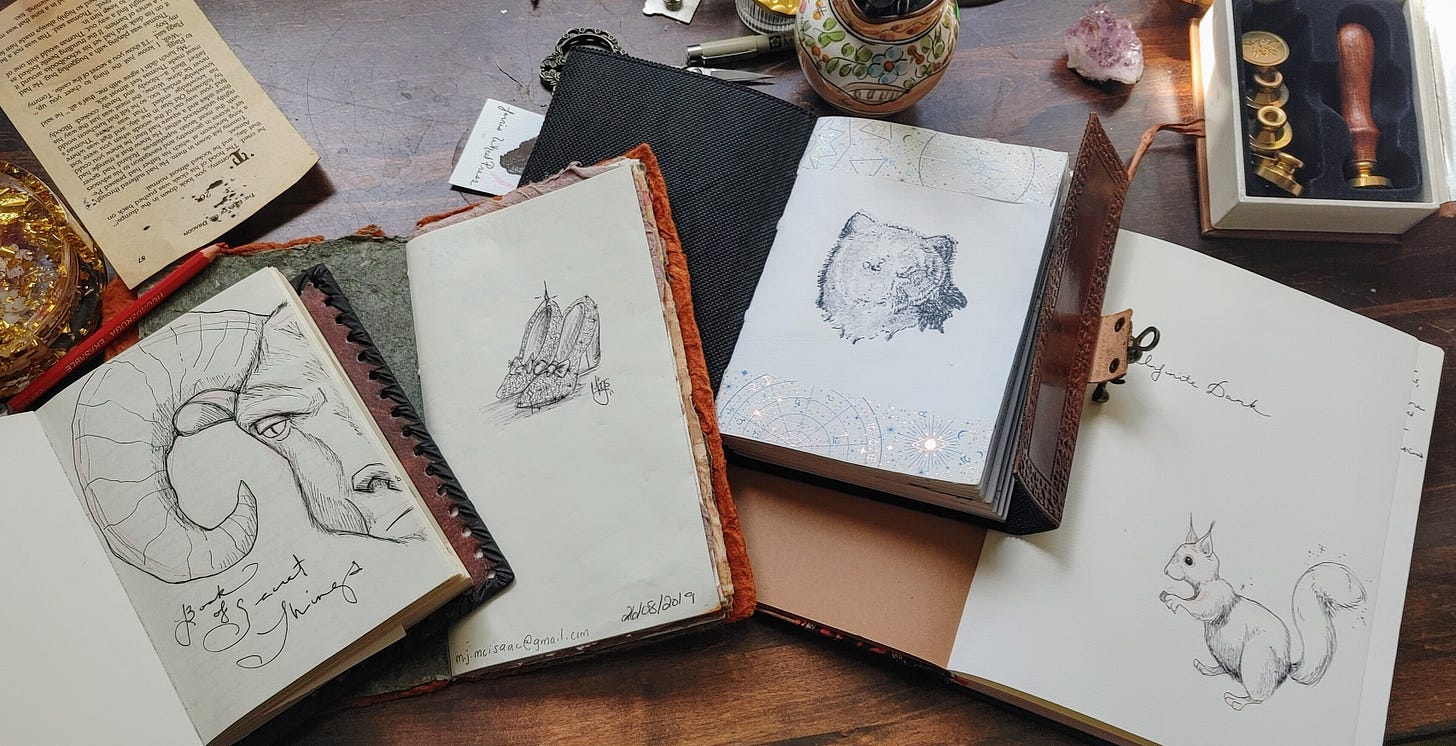Happy September, dear reader!
I'm here today with a ginormous notebook post - specifically, how I use notebooks for writing fiction. It’s a long one, I’m sorry for that. I’m about to geek out real hard.
Notebooks have been a part of my life for as long as I can remember, but specifically a notebook for my creative writing? I remember the very first. I was in grade 2 and I had been given a little notebook with a beagle on the cover sitting in grass. Knowing this little pup needed a story, I filled the book as if it was a paperback novel. The beagle's name was Clover and he lived on a farm with a kindly old farmer and two grumpy German shepherds. Now, decades later with a grade 2 kid of my own, I still remember the finer points of Clover's story. And that’s the power of notebooks - I don’t remember all the stories I cook up, but the ones that find themselves a home in a notebook, oh boy do I remember those.
So when I thought about how to share the way I keep my writing notebooks with you, I realized my process is....made up. I'm still just doing a lot of what I did as a kid, with some added features but mostly the same. I started to feel a bit self-conscious about sharing it but I shook that off quick because - say it with me - there's no rules for notebooks! There's no magic formula or checklist for how to fill a notebook and that’s triply true for a notebook devoted to a story in progress.
If you don’t have a notebook specifically devoted to your work-in-progress, and want a peak inside someone else's for inspo - or you DO have one and just want to compare pages - I thought I'd share a break down of mine. (Also, if you are looking for a look at more creatives’ notebooks, Jillian Hess at Noted is sharing some really inspiring stuff that I just can't get enough of).
I've written before about my WIP notebook (work in progress) - when an idea feels firm and solid enough to graduate from my ideas notebook, I give it a notebook all its own. Graduating an idea is a carefully considered move - I don’t want to waste a notebook after all. Starting a new WIP notebook is a commitment to YEARS of developing that one idea. From first point form notes all the way through to the launch day checklist, the WIP notebook lives a LIFE. Some of these notebooks have been in progress longer than my children have been around.
And that’s ok! Maybe some of these stories never see a launch day, come to a finish line. Starting a WIP notebook isn’t about a final destination - its about a commitment between me and my story, to explore and develop it as long as it takes, however far it goes.
On page 1, I like to do a title page just cus it gives me somewhere to start. Its a first step that lets me mark up the notebook without stressing too much. If you’re not a doodler, you can add stamps or washi tape, or stickers, or inspiring quotes! I just like to have something to get the ball rolling.
From there - anything goes! I might fill a page with bullet points of the basic idea. Or a scene that I had in mind. Maybe a series of questions to myself. Or a pitch-style summary. Maybe a character profile. It doesn't matter! What matters is that every thought and idea is collected.
In my WIP notebook, I like to keep:
- plot outlines (it changes a lot)
- research notes
- character profiles
- dialogue (written like a script)
- world building notes
- prose
- reading lists (books for research, books who's style/voice I like, books with themes that touch on similar themes)
- quotes (motivational, thematic, relevant)
What's Next?
Call Back lists
Sprinkle lists
(I’ll break these three down more below)








